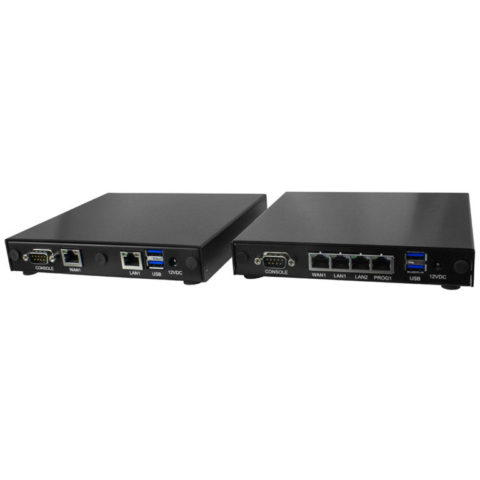Unlocking Your Network: A Comprehensive Guide To Remote Accessing Devices Behind Your Router
In our increasingly connected world, the ability to access information and resources is often just a click away. Yet, there's a common scenario that can feel like a digital roadblock: trying to reach a device that's sitting comfortably behind your home or office router. Whether it's your personal desktop, a smart home camera, a temperature sensor, or an IoT project, these devices are typically on a private network, hidden from the vast expanse of the internet. The good news? The ability to remotely access devices behind your router isn't just a convenience; it's a gateway to unparalleled flexibility and control over your digital life.
This article will guide you through the fascinating process of bridging that gap, leveraging various technologies and tricks to ensure smooth connectivity and control. We'll explore everything from simple direct connections to advanced secure tunnels, empowering you to manage your digital assets from anywhere in the world.
Navigating the Network: Core Concepts for Remote Access
The Router as Your Digital Gatekeeper
Think of your router as the bouncer at the club entrance to your home network. It manages all traffic coming in and out, assigning private IP addresses (like 192.168.1.5 or 10.0.0.0/24) to your devices. By default, for security reasons, your router blocks external access to these devices. This is where Network Address Translation (NAT) comes into play, allowing multiple devices on your private network to share a single public IP address provided by your Internet Service Provider (ISP).
The only mandatory prerequisite for remote access is an active internet connection. If that is met, there are a few independent options for remote access described below.
Direct Access: Public IP & Dynamic DNS (DynDNS)
The simplest way to access a device remotely is via its public IP address, if it has one or if you can direct traffic to it. However, most home internet connections use dynamic IP addresses, meaning your public IP changes periodically. This is where Dynamic DNS (DynDNS) services become invaluable. If your router has DynDNS set up on it, it will automatically update a chosen hostname (e.g., myhome.dyndns.org) with your current public IP address. This allows you to always use that easy-to-remember hostname to reach your network, regardless of IP changes.
Once you can reach your router's public IP or DynDNS hostname, you'll often need to set the right port open on the address of the specific device you want to connect to. Then, you can just contact that IP address and port.
The Power of VPNs: Your Secure Tunnel
Virtual Private Networks (VPNs) are arguably one of the most secure and versatile methods for remote access. A VPN creates an encrypted tunnel between your remote device (e.g., laptop) and your home network. Once connected to the VPN, your remote device essentially becomes part of your home network, allowing you to access devices as if you were physically there.
- Software VPNs: Solutions like Hamachi allow you to VPN to your desktop, creating a virtual network over the internet.
- Router-based VPNs: For a more robust solution, you can install a VPN server directly on your router. This is particularly useful in a household where the router is used by multiple people. You could connect a second router to the first router via Ethernet, install a VPN on that second router, and then connect your own devices (like PoE cameras, PoE lights, temperature, and humidity sensors) to that second router and an unmanaged switch via Ethernet. This provides a segregated, secure network for your personal devices.
With a VPN in place, you get seamless and secure access to remote systems across networks. After a successful connection, you can launch Microsoft Remote Desktop or your preferred RDP client to initiate the remote desktop session as you normally would. When configuring VPNs, remember that you can choose from the range 0 to 255 for ports, avoiding the value 89 which is default dedicated for VPN accesses.
Remote Desktop & VNC: Controlling Your Machines
Once you have a pathway into your network (like a VPN or direct access via port forwarding), you can use specific protocols to control your devices:
- Remote Desktop Protocol (RDP): If you're accessing a Windows PC, you can RDP via Windows 7 RDP or other versions. This allows you to see and control the desktop environment as if you were sitting in front of it.
- Virtual Network Computing (VNC): For a more universal remote desktop experience across different operating systems, VNC is a great choice. TightVNC is an open-source VNC software that can be installed on IoT devices for remote desktop access. Because IoT devices installed behind a NAT router and firewall cannot be accessed from the internet directly, solutions like SocketXP's IoT remote access solution can be used to remotely connect to the IoT GUI desktop using VNC over the internet.
Port Forwarding & NAT: A Common, Yet Tricky, Method
Port forwarding is a widely used method to allow external traffic to reach a specific device on your private network. You configure your router to direct incoming
- Caitlin Clark Wedding Date
- Astartes Anonymous
- Hot Ebony Chicks
- Bubblehouse Tea
- Parkland Veterinary Hospital Parkland Fl

Remote Access

Remote Access Points | Aruba, a Hewlett Packard Enterprise company

Secure Remote Access | Device Management OOB | Lantronix